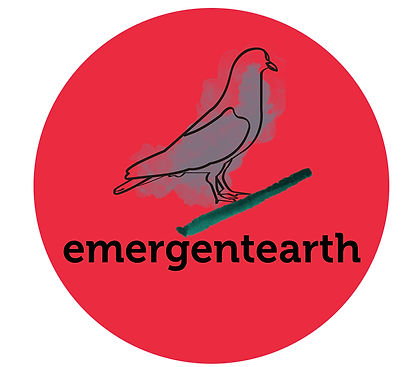an emergent
website design
by
peter jay stein, md, ma
atmosphere
asthenosphere
lithosphere
regolith
biosphere
hydrosphere



This 54 page synopsis of the evolution
of the Earth, the origin and progression of life, and the
emergence of humans as descendants of the hominin lineage, divides the last 4.57 billion years into progressively overlapping, imagistic, time segments, to outline our place in biological existence.
magnetosphere
ionosphere
ELEVEN
EMERGENT PRECAMBRIAN
(adapted from Lets Review Earth Science, 4th Ed., 2015); and
The Geologic Time Scale, 2012.
Billion Years
Ago (BYA)
4.57
3.5
4.0
3.3
Earth consolidates into a massive molten sphere, under heavy meteroid bombardment
oceans present
oldest known rocks: Canada's Acasta Gneiss: 4030 mya
traces of inorganic oxygen (O2) release
oldest fossil-like objects (micro-fossils)
first anaerobic bacteria
3.2
photosynthetic bacteria
2.8
3.0
anaerobic prokaryotes diversify
oxygen from cyanobacteria saturates oceans with iron oxide (Fe2O3)
H
A
D
E
A
N
EON
2.6
2.4
2.3
2.2
0.40
2.1
0.42
0.49
0.54
0.60
0.58
0.65
0.70
0.75
1.2
1.4
aerobic photosynthesis develops
A
R
C
H
A
E
N
2.5
P
R
O
T
E
R
O
Z
O
I
C
first widespread, diverse stromatolites
1.8
oxygen-rich atmosphere
oxygen enters atmosphere
eukaryotes develop - 2200 mya (2.2 bya)
oldest eukaryote fossil: Grypania spiralis
1.6
aerobic prokaryotes diversify
eukaryotes diversify
oldest traces of invertebrates
oldest large algae
megascopic eukaryotes develop & diversify
oldest body invertebrate fossils
ediacaran fauna: first multicellular, soft-bodied marine animals, and their diversity
extinction event
non-vascular land plants
early vascular plants
P
R
E
C
A
M
B
R
I
A
N
S
U
P
E
R
E
O
N
earliest trilobites - earliest arthropods
earliest fishes
C
A
M
B
R
I
A
N
Earth's oldest crustal material (detrital zircons)
formation of the solar system
end of global glaciation (deglaciation), CO2 drawdown, rise in oxygen
snowball Earth glaciation
first appearance of metazoans
oldest macroscopic evidence of life
glaciations and rise in atmospheric oxygen
accretion of giant Moon-forming impact event
first stable proto-continents
rise in atmospheric oxygen
0.635
Great Oxygenation Event
Supercontinent Formation
Columbia
Late Archean Superevent
first appearance of global glaciation
850 mya
Cryogenian
635 mya
Ediacaran



